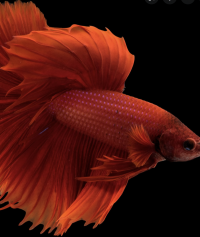| Team Name |
Why is it a STAR project? How can other teams learn from what this team has done? |
School |
Category(ies) |
Nominated by: |
|
CS Team 9
 |
This group extended the question of photosynthesis and cellular respiration to the effect of different colors of light on seed germination. Subsequently they are continuing the project afterward by planting the seeds and monitoring the growth under the same lights they were germinated from. They documented carefully their progress, their experimental design included all components, multiple test groups and controls. Clearly defined research question, prediction and a conclusion that extends the project. They communicated well with their amazing mentor too! |
Santaluces High School |
Planning, Designing and carrying out an investigation, Making sense of findings, Online communication,Recording ideas and findings |
Gwonjin Lee, Scientist Liaison, and Donna Hazelwood, Scientist Mentor |
|
Richbourg Project 1
 |
Sincerity in performing the experiments, duly reporting the results and asking questions. |
Anna-Jonesboro Community High School |
Designing and carrying out an investigation, online communication, recording ideas and findings |
Devesh Shukla, Scientist Liaison |
|
Dragon Blood Trees
 |
he students was passionate about their experiment. The students and mentor discussed about their experiment everyday. The students asked questions and updated their progress daily to their mentor.
This team made great communication with the mentor by updating their work process and data. They created graphs which clearly show the results. The mentor gave a lot of supports and encouragement to the team. He also inspired the team to think outside the box, which helped students to improve their experiment and data analysis. Therefore, the team and the mentor interacted with great engagement and discussion on the experiment and science. |
Nottingham School |
Designing and carrying out an investigation, online communication |
Shan Wong, Scientist Liaison and Andrew Schnabel, Scientist Mentor |
|
Planting Protagonist's
 |
The team had an excellent communication with the mentor about the the experiment process with updated journals, photos, and posts. They did a good job on analysing the data and making detailed conclusion on the experiment. |
Nottingham School |
Planning, designing and carrying out investigations, making sense of findings, online communications |
Shan Wong, Scientist Liaison and Stephen G. Saupe, Scientist Mentor |
|
Group 15 - STARS
 |
In brainstorming their research question these students utilized phenomena they observed in class to design their experiment. Their data collection is reflected in their conclusion. They utilized the suggestions made by their mentor. Most importantly, they were amazed by the results of their experiment and will continue to monitor the results. |
Santaluces High School |
Designing and carrying out an investigation, making sense of findings, online communication, recording ideas and findings, innovation, determination and attitude |
Gwonjin Lee, Scientist Liaison and Mara McHaffie, Scientist Mentor |
|
Chicos de Arbol
 |
I consider this to be a star project since they managed to put together a comprehensive and compelling report in order to convince the city council about the benefit of urban trees. Not only they managed to explain nicely the obvious - that trees are beneficial - but they managed to tear apart and compare tree age/size in terms of what would be the most beneficial for storm water uptake, as well as how many smaller trees would need to be planted to cover up for the benefit of one large tree removed. |
University Liggett School |
Making sense of findings |
Marina Osorio, Scientist Liaison |






